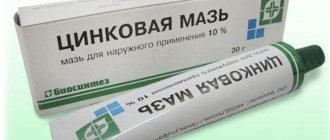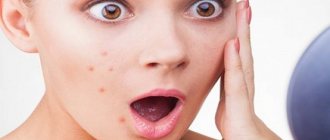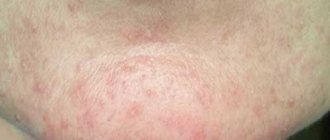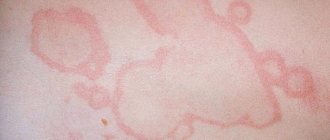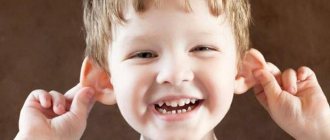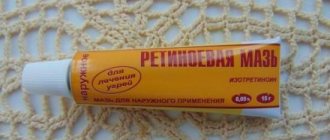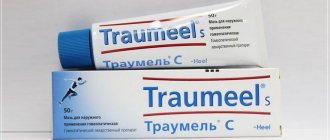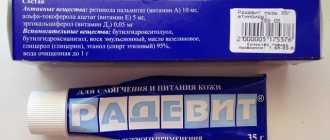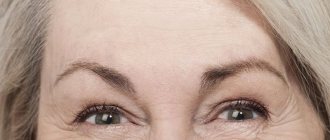When some problems arise with the face, this situation becomes very unpleasant for a person. Allergies on the face and skin not only spoil the aesthetic appearance of people, but also cause them a lot of discomfort with their symptoms.
As a rule, allergic reactions occur due to internal problems of the body associated with disruption of the immune system. But in most cases, systemic therapy can be avoided with the help of external antiallergic agents, such as hormonal and non-hormonal allergy creams.
Which ointments and in what cases are best to use?
To treat the manifestations of allergies on the skin, ointments of hormonal and non-hormonal origin are used. Each drug is selected depending on the stage of the disease and its symptoms.
Non-hormonal ointments for allergies are used for a mild stage of the disease, not accompanied by other symptoms, but only by small foci of rashes on the skin. Medicines begin their therapeutic effects immediately after application. A positive result is observed approximately 1-2 hours after application.
Corticosteroids, or hormonal ointments, are used for severe forms of allergies. It is recommended to use this type of product for no more than 10 days. You should not prescribe these drugs yourself, as they have a large number of contraindications and cause unwanted reactions in the body.
If there are signs of suppuration, a strong inflammatory process with suppuration has developed, antibiotic ointments are prescribed.
Types of skin rashes
If you have an allergy on your face, your doctor can tell you what to apply to such rashes after examining the painful changes on your skin that you have as a result of an allergic reaction. So, among the most common skin diseases of this nature are the following:
- allergic eczema;
- hives;
- neurodermatitis and atopic dermatitis.
Allergic eczema can be identified by the rough and rough red patches that appear on the skin. They cause severe itching and over time, such rashes create erosions on the skin that peel and begin to become wet. In most cases, eczema appears on the face and hands, but its appearance is also recorded on other areas of the skin.
One of the most common allergy symptoms that appears on the skin is hives. It is characterized by the presence of blisters that resemble nettle burns. As a result, the patient experiences severe itching, which causes a lot of trouble. Over time, such blisters can turn into very large plaques.
Another sign of allergies is atopic dermatitis. It can occur if a person who has an increased level of sensitivity to certain allergens comes into contact with it. As a result, vesicles can form on the skin, causing pain and itching. If the case is severe, watery blisters may appear on the skin.
There is another type of skin rash that occurs during allergies - neurodermatitis. It is also characterized by itching and papular rashes. At the same time, the skin becomes dry and rough. The skin plaques themselves are usually found in the popliteal and ulnar fossae, as well as on the neck.
There are other types of skin rashes that appear as a result of allergies, but these are the most common. In any case, after their appearance, it is imperative to consult not only an allergist, but also a dermatologist. The fact is that skin diseases can masquerade as allergies; it will be very difficult to distinguish them from it “by eye”, which will affect the quality of treatment for the patient.
So, for example, when asked whether it is possible to smear an allergy with brilliant green, an allergist will answer “no,” but for dropsy, brilliant green is used without fail. Therefore, without an accurate diagnosis, the skin diseases listed above cannot be cured. You should always remember this and not self-medicate.
Hormonal ointments
Corticoids help to quickly relieve the inflammatory process in eczema and atopic dermatitis. These drugs interrupt the chemical reactions that lead to skin inflammation. However, hormonal ointments should be used with caution, since most of them, if dosages are not observed and long-term use, negatively affect the adrenal glands.
The most dangerous are those that, after application, are absorbed into the blood, leading to the accumulation of hormones in it. This process causes weakening of the immune system. Therefore, hormonal drugs should be used with caution and only in severe stages of allergies.
Corticoids should be discontinued gradually, reducing the dosage of the drug or mixing it with cream. Otherwise, withdrawal syndrome may develop. So, here are the most effective hormonal ointments for allergies.
Advantan (540 RUR)
Advantan belongs to the new generation of corticoids. This allows you to use the product for a long period - 2-3 months - and not be afraid of negative reactions from the body.
The ointment is applied exclusively to the inflammatory focus in a thin layer (gently rubbed in). It is not advisable to touch healthy areas of the skin.
- The frequency of skin treatment is 1-2 times a day.
- To treat facial allergies in adults, use the product for no more than 7 days.
Advantan should not be used for viral skin lesions, manifestations of tuberculosis and syphilis, rosacea, periorbital type dermatitis (damage to the eyelids and area around the eyes).
Sinaflan (20 rub.)
One of the cheapest ointments for allergies, but no less effective. Sinaflan has antipruritic, antiallergic and anti-inflammatory effects. This ointment should be used with extreme caution, since it has a lot of contraindications and leads to undesirable effects on almost all organs and systems.
It should only be applied to the site of the rash 1-2 times a day. Treatment should not exceed 10 days. For allergies on the face, the product is used for no more than 1 day.
It is not recommended to apply Sinaflan in the form of a compress. Children are allowed to use the ointment after 2 years in minimal dosages and only as prescribed by a dermatologist or pediatrician.
Other cheap and effective ointments include: Actovegin, Gistan, Fluorocort, Zinc ointment and Levomekol.
Comfoderm (RUR 243)
It is used for severe forms of allergic dermatitis and eczema on the skin of adults and children. It is necessary to treat the skin with the product no more than once a day. Use with an occlusive dressing is allowed.
Comfoderm ointment is gently rubbed into the lesions. The duration of therapy is 12 weeks. Children are allowed to use the product for only one week. If the allergy appears on the face, then the ointment is applied for 5 days - no more.
Comfoderm should not be applied to skin lesions caused by viruses or a reaction to vaccination. Caution should be exercised during pregnancy and lactation.
Elokom (330 RUR)
The drug eliminates the inflammatory process, relieves itching, burning, and has vasoconstrictor and keratolytic effects.
The product is applied to the affected areas once a day. The duration of treatment is determined by the dermatologist depending on the degree of damage and the individual characteristics of the patient.
General concepts of pharmacology
Any drug is always available in a specific release form; for a pharmacologist, this is a dosage form.
In other words, this is a convenient state of the drug in which it can have the most pronounced effect. Dosage forms are therefore soft, solid, and liquid. Soft forms include creams, pastes, gels, ointments, liniments. Gel – here the consistency is jelly-like, elastic and plastic, translucent, without fat. The gel can be taken orally and even injected under the skin. Krem is a type of soft ointment, to which water is added in addition to fat or oil. It always has only a softening effect on the skin, nothing more; has a lighter consistency.
The role of ointments and creams is increasing because children under 5 years of age practically do not undergo SIT (specific immunotherapy), which is considered quite effective in adults. Therefore, we can only rely on local treatment. Children's skin is always very delicate, especially in infants, and compliance with the dose, frequency of application and choice of the drug itself is always important. It often happens that an effective antiallergic ointment suddenly does not work for a child with allergies.
Non-hormonal ointments
Non-hormonal drugs can relieve the symptoms of allergic manifestations on the skin, quickly regenerate the epidermis, and also increase local skin immunity.
Elidel (RUR 902)
It has an anti-inflammatory effect and relieves the symptoms of the disease. Elidel is used on all parts of the body, including the face, neck, and head. The use of the product resists further exacerbations and atrophic processes on the skin.
Elidel is allowed to be used by infants from 3 months. The course of treatment is 6 weeks. The ointment should be applied 2 times a day (with rubbing movements).
The ointment is not used for viral, bacterial and fungal infections of the skin.
Vundehil (RUR 170)
Allergy ointment Wundehil eliminates inflammation, has a healing effect on the skin, relieves pain, and removes swelling. Apply the ointment to the affected areas 2-3 times a day in a thin layer (without rubbing). Next, you need to wait for the product to be absorbed. The duration of treatment is until the skin is completely healed.
The drug does not cause side effects, as it consists entirely of plant materials. Vundehil is allowed to be used by children, pregnant women and nursing mothers.
Skin cap (700 rub.)
Skin-cap is a drug of the latest generation with a minimum of side effects and contraindications. Apply the cream to the affected areas twice a day - in the morning and at night. The skin does not need pre-cleansing.
In this case, it is important to endure the course of treatment, which is 4 weeks. The skin should be treated only after thoroughly shaking the product.
Zinc ointment (20 rub.)
Zinc ointment is used in complex therapy. It is advisable to use it as a single treatment only for mild forms of the disease. The drug has a drying and anti-inflammatory effect, relieves itching, swelling and redness.
Allergy-affected areas should be treated three times a day . The ointment can be used during pregnancy and children. The duration of treatment is 5-10 days. If necessary, therapy continues for up to 30 days.
Bepanten (400 rub.)
Bepanten has a regenerating effect. The product quickly eliminates redness, itching, pain, and moisturizes the skin. The peculiarity of Bepanten is that it can be used for children from the first day of life.
The ointment should not be used for weeping type dermatitis. Apply the product three times a day and gently rub into the skin.
Protopik (RUB 697)
Protopic eliminates the inflammatory process. The ointment effectively fights moderate and severe atopic dermatitis. Allowed for use by children over 2 years old. The drug is prescribed if other drugs have not had a therapeutic effect or there are contraindications to them.
Protopic is used on any part of the body, including the neck, face, and head.
The ointment is applied twice a day only to the affected area. Treatment should continue until the skin is completely healed.
Antiallergic cream for children
A child's body, unlike an adult's, reacts more sensitively to the effects of medications. Therefore, they are prescribed only a non-hormonal cream for skin allergies. The classic option is Bepanten.
It is popular because it can be used even by the youngest children. It contains only natural ingredients that help to quickly relieve any type of inflammatory process.
If allergies in children become more pronounced and serious, Epidel cream is recommended. This is also a non-hormonal remedy, but its use is possible only from three months of age.
Antiallergic ointments for children
It is ointments of the non-hormonal group that are recommended for the treatment of allergies in children. They have a minimum of contraindications, do not cause adverse reactions, and in most cases are allowed from the first days of life. Hormonal ointments are used in severe cases when the lesions on the child’s body are significant.
Non-hormonal children's ointments for allergies:
- Fenistil gel (250 RUR). Used from the 1st month of a child’s life. Apply 2-3 times a day. The ointment is not used on skin with bleeding areas or heavily scratched areas.
- Gistan (180 rubles). Quickly relieves allergy symptoms, resists relapse of the disease, and improves the condition of the skin. Apply the cream 4 times a day. Before use, the skin must be cleaned with an antiseptic. Allowed for use by children from birth. Plant Gistan should not be confused with Gistan N, which is hormonal.
- Skin-Cap (790 RUR). The drug is the latest generation, which can be used by children of any age. The skin is treated with the drug 2 times a day.
- Elidel (900 rub.). Used for severe dermatitis in children. Used from 3 months of age.
- Desitin (230 rub.). It is allowed to be used by everyone without exception (except for people with individual intolerance to the components of the drug), and does not cause adverse reactions. Permitted for long-term use. Application frequency: three times a day. Used for babies.
- Wundehil . Herbal preparation. Treat the skin with ointment 2-3 times a day. The course of treatment is until complete healing (but not more than one month). Does not cause unwanted reactions, has no contraindications.
Hormonal ointments allowed for children with allergies:
- Elokom (380 RUR). Used only at six months of age. Treatment for chickens is no more than one week. The ointment is discontinued with caution (mixed with baby cream). Used for severe forms of allergies. Apply once a day.
- Advantan (350 RUR). Can be used from 4 months. Indications: severe forms of allergies, eczema. The duration of treatment is determined by the doctor.
It is recommended to use the following as creams with healing and regenerating effects:
- for infection of affected areas - Dioxidin, Sulfargin, ichthyol and zinc ointments;
- to accelerate cellular tissue regeneration - Solcoseryl, Actovegin;
- heal the skin and increase local immunity - Videstim, Radevit, Curiosin, methyluracil ointment;
- will quickly relieve allergy symptoms in the form of itching, swelling, pain, redness, peeling, dryness - Bepanten, La-Cri, Mustela Stelopathia.
Contraindications and side effects
Bepanten ointment has a restorative and moisturizing effect, so it is applied even to very sensitive and dry facial skin. The product is used after eyebrow tattooing, after shaving, and for wrinkles under the eyes. Other indications of the drug (what else the ointment helps with):
- Diaper dermatitis, diaper rash in babies.
- Shingles, colored, pink lichen.
- Anal fissures.
- Cracked heels.
- Suppuration of the wound surface.
- Herpes on the lips.
- Frostbite.
- For the care of cracked nipples during lactation.
- For dry lips.
- For purulent mastitis.
- Postoperative scars, sutures, scars.
- After chemical peeling of the face.
- After epilation.
- To accelerate the healing of the epidermis in case of irritation, microdamage (scratches, burns, UV irradiation).
The international name of the drug is BEPANTHEN. According to the manufacturer's description, this is a universal skin care product, the task of which is to normalize the metabolic processes of the skin. Reviews from experts prove that this medicine is suitable for people of any age and has a minimal number of side effects on the body.
Bepanten for acne
The expanded composition of the active components of the drug allows it to be used to treat acne to avoid infection. Bepanten ointment shows high effectiveness in the treatment of opened pimples after facial cleansing or when irritation occurs around pimples.
Numerous positive reviews about Bepanten claim that the ointment is effective for dry facial skin. If you don’t know how to replace a cream that doesn’t moisturize well, feel free to purchase an ointment for these purposes. It is known that dry skin is the most susceptible to aging, so use Bepanten plus ointment as a nightly care and to prevent dry skin from wrinkles instead of face cream.
We invite you to familiarize yourself with Imoferase for facial wrinkles
From cracks
Abrasions and cracks on the nipples often spoil the beauty of breastfeeding a child for a woman. There are many reasons for this condition: lack of vitamins, insufficient preparation of the mammary glands for lactation, incorrect position of the baby during feeding, and many others. To prevent painful sensations from interfering with enjoying the process, use Bepanten ointment when caring for the breasts of a nursing mother. Apply the product to the nipples 2-3 times a day, but do not forget to wash off before feeding so that the product does not get into the baby’s mouth.
For bruises
Hematomas and bruises are not the best decorations for appearance, especially on the face. The cause of their occurrence is damage to soft tissues, which occurs from a blow or bruise. Bepanten ointment will help you get rid of hematomas faster, as it will remove all their manifestations in 2-3 days. The medicine, penetrating to the area of blood accumulation, accelerates its resorption. To quickly treat a bruise, apply to the damaged area 2-3 times a day until it is completely healed.
Bepanten for burns
The ointment is excellent for treating thermal and chemical burns, and also effectively restores the skin after sunbathing. Sometimes the drug is prescribed after skin transplantation for their speedy regeneration. Bepanten helps reduce the inflammatory process after a burn, swelling and pain.
From diathesis
Red cheeks in a baby are not always an indicator of health. Sometimes such a blush is a symptom of diathesis that occurs against the background of allergies. Red spots, peeling, and rashes cause a lot of anxiety for mothers and babies. Bepanten quickly relieves itching and removes redness, but it is usually prescribed together with anti-inflammatory drugs (traditional or steroid). The ointment has a drying effect, actively moisturizing the baby's skin.
The body of newborns is not sufficiently adapted to the effects of the environment, so immediately after birth, infants suffer from prickly heat. More often it appears in the folds of the skin and looks like small pink pimples. Bepanten helps cure prickly heat in the groin, under the arms and on the child’s face. To do this, after water procedures, apply the drug to problem areas, but avoid contact with the eyes.
Women often use Bepanten ointment during pregnancy, because during this condition the skin stretches and stretch marks form. To avoid finding multiple stretch marks on the skin after the maternity hospital, you should engage in timely prevention. It consists of maximizing skin hydration so that it is elastic and does not tear when stretched.
Fissures in the anus are fraught with significant pain, bleeding, and sometimes inflammation of the hemorrhoids. The drug Bepanten effectively copes with the treatment of hemorrhoids at any stage. Dexpanthenol quickly eliminates the inflammatory process in the rectum and anal area, promoting the healing of painful and bleeding fissures.
The procedure is performed lying down. If this is your first time, find a video on the Internet on how to properly administer medications into the anus. After applying the ointment, you need to lie down until it is completely absorbed. Bepanten is administered 2-3 times a day or after each bowel movement until recovery.
Bepanten ointment is one of the few medications used to treat allergic manifestations. Any skin manifestations of allergies quickly disappear due to the presence of provitamin B5, lanolin and other components in the preparation, which contribute to the rapid restoration of the epidermis. The medicine is suitable for the treatment of allergies for pregnant women, nursing mothers and children of any age, since it does not contain any substances harmful to the body. The use of the ointment is allowed up to 6 times a day, depending on allergic manifestations. The course of treatment is prescribed by the doctor.
For dermatitis
Bepanten ointment is the best remedy for the treatment of seborrheic, oral, atopic, diaper and other types of dermatitis. It can be applied without harm to thin skin to places near the mucous membranes and is allowed to treat babies from birth. To observe positive dynamics in dermatitis, eczema and trophic ulcers, it is enough to apply the drug 2 times a day to the problem area. In just a couple of days, inflammation and peeling will subside, and open wounds will heal in 3-4 days.
There are few contraindications to the use of Bepanten ointment, but they do exist. This is an individual hypersensitivity of a person to the components of the drug, the appearance of allergic reactions to the composition. No cases of overdose have been recorded by medical studies. As for side effects, in very rare cases the use of the drug is accompanied by hives or loose stools in a newborn. If such reactions occur, you should stop using the drug and consult a doctor.
Advantan is also a new generation ointment and cream, considered the safest. Prednisolone derivative. Used for eczema, allergic dermatitis, from 6 months of age; The hormone concentrate in the drug is small. Contraindicated in TBC, LUES, rosacea, post-vaccination, chickenpox and herpes zoster.
Gistan-N - applicable only with the permission and instructions of a doctor. Not prescribed for children under 2 years of age. It should also not be used after vaccinations or any skin infections; TBC and syphilis. It rarely affects the adrenal glands.
Strictly contraindicated: any ointments based on Hydrocortisone - these are Oxycort, Fluorocort, Gioxizon, Sopolcort, Fucidin, Polcortolon, Betamezon, Kenalog, Cortef, Lokoid, Nazacort, Triacort, Daktacort.
Undesirable for use: Flucinar, Lorinden S, Ultralan, Celeston, Sinalar, Vipsogal, Flunolon, Betasalin, etc.
Applicable as directed by a doctor: Advantan, Gistan N, Elokom, Avecort, Dermovate, Skinlight, Clobetasol, etc. Every organism is individual and it is impossible to predict its reaction to the cream.
In addition to these 2 groups, ointments have been created with combinations of GCS with antimycotics or antibiotics. Used in the presence of secondary infections of skin allergies. The most commonly used are Akriderm and Triderm. A child’s tendency to develop allergies usually lasts for a long time, so prevention of allergies is necessary.
SDK: Sun protection. An uncontrollable child. Reusable diaper. Vanilla-chocolate pudding
Fenistil— a gel that has a pronounced antipruritic effect on the skin, reduces irritation during skin allergic reactions, and has a local anesthetic effect. The active ingredient is dimethindene maleate. Indications: Skin itching due to urticaria, insect bites, eczema and dermatoses, sunburn and other burns. Age restrictions: cannot be used to treat newborns, since use in children from 1 month is allowed. Side effects: Allergic reactions such as itching, rash, burning and dry skin. Special instructions: The gel should not be used on large areas of skin in infants and children under 6 years of age, especially if there is bleeding or severe inflammation. When using, avoid exposure to direct sunlight, especially for large areas of skin treatment. Average price in pharmacies: 220-250{amp}lt; rub. |
Gistannot to be confused with Gistan N, which contains a hormonal drug. Gistan is a non-hormonal cream, but a biologically active additive for topical use, which includes lily of the valley oil, extracts of birch buds, lupine, milkweed, speedwell, string, violet, calendula, as well as dimethicone and betulin. Indications: This is an external remedy used for allergic reactions on the skin - blistering rashes, itching, urticaria, and also as a local anti-inflammatory agent for eczema and atopic dermatitis (neurodermatitis), insect bites. Side effects: Allergic reactions to the components of this dietary supplement may occur. Average price in pharmacies: 150 rubles. |
Skin Cap— cream and gel for topical use, has antibacterial, antiproliferative and antifungal effects, contains activated zinc pyrithione. If a doctor prescribes this cream to you, know that there is information that it contains clobetasol propionate, which is not mentioned in the instructions, but this substance is a synthetic glucocorticosteroid, which may classify this cream as hormonal. We do not undertake to either confirm or refute this, but such information exists, sooner or later it will be proven or refuted. Indications: Dry skin, seborrheic, atopic dermatitis, psoriasis. Age restrictions: can be used in children from one year old. Side effects: Rarely allergic reactions occur. Average price in pharmacies: 650 rubles. |
We suggest you read What to do with blackheads on the nose
Elidelcream, the main active ingredient of which is pimecrolimus. Indications: Has a local anti-inflammatory effect for atopic dermatitis and eczema. Age restrictions: Used to treat dermatitis in children from 3 months of age. Side effects: Occurs mainly at the initial stage of treatment, a burning sensation in the treated area, itching, redness and irritation of the skin, folliculitis. It is also possible that allergic reactions may occur, deterioration of the skin condition, change in skin color, etc. The use should be treated with caution; the long-term effects of the drug have not yet been fully studied; it is believed that it reduces the activity of the immune system and in rare cases leads to the development of lymphomas and skin oncology. Special instructions: During treatment, it is recommended to minimize artificial or natural ultraviolet irradiation. Average price in pharmacies: 950-970 rubles. |
Desitinointment for external use with the active ingredient - zinc oxide. Indications: Dermatitis, burns, diaper rash, prickly heat in children (treatment), ulcerative skin lesions, eczema in the acute stage. The drug also contains cod liver oil, and the vaseline-lanolin ointment base forms a protective barrier, reducing the impact of irritants on the affected area, preventing the spread of the rash. Special instructions: The ointment should not be applied to infected areas of the skin. Price in pharmacies: 160-220 rubles. |
ProtopikThis is an ointment whose active ingredient is Tacrolimus. Used to treat atopic dermatitis in children. For children, only 0.03% ointment can be used, and only from 2 years of age, this ointment has a pronounced anti-inflammatory effect, unlike hormonal agents for atopic dermatitis and allergic reactions, it does not cause skin atrophy. Price: 1500-1600 rub. |
WundehillA cream containing tinctures of yarrow, sophora, cinquefoil, propolis and cardophilene. It has a healing, bactericidal, hemostatic, anti-inflammatory effect on the skin and mucous membranes. Indicated for use: for psoriasis, allergic reactions, dermatitis, burns, neurodermatitis, trophic ulcers. The minimum course of treatment is 7 days, the maximum is 1 month. Price: 120-150 rub. |
Bepanten
Ointments for itchy skin
| Name of ointment | How to use | Is it possible for children |
| Beloderm | 1-2 times a day. The course of treatment is no more than 4 weeks. | From 6 months. |
| Psilo-balm | 4 times a day. The duration of therapy is determined by the doctor. | After 2 years. |
| Iricar | 3 times a day for 2 weeks. | From one year. |
| Mesoderm | 2-3 times a day for 3 weeks. | It can be used at different ages, but after consultation with a doctor. |
| Fucidin | 2 times a day for a week. | From birth. |
| Akriderm | Twice a day for 2-4 weeks. | Over 12 years old. |
| Prednisolone | 3 times a day for 3-7 days. | From 3 years. |
Application of Bepanthen against wrinkles
It is necessary to use Bepanten or Panthenol for the face against wrinkles in accordance with your skin type. For dry epidermis and the area under the eyes, the drug in the form of an emulsion is well suited. After applying it twice a day (morning and evening), there is no need to apply other products.
Oily facial skin prone to rashes will better respond to the effect of Bepanten in the form of a spray. The drug is applied once a day to clean skin from a distance of about 20 cm. The main rule is not to overdo it with the frequency of application in order to avoid peeling of the epidermis.
Bepanthen cream is an ideal option for dry skin. Thanks to its moisturizing properties, it nourishes the layers of the dermis well, smoothing out wrinkles. In addition, the product heals microcracks and wounds that often form on dry skin.
As for Bepanten in the form of an ointment for wrinkles, it is better not to use it to eliminate them or in other cosmetic procedures. The drug has an excessively dense texture. When applied to the face, it clogs the pores, which leads to the formation of sebaceous plugs and, as a result, to a decrease in the supply of oxygen to the dermis. It shows signs of early wilting, visually adding a few extra years.
In addition to excellent wound-healing and soothing properties, Bepanten for the face is indispensable for women seeking to maintain their youth. It nourishes, moisturizes and restores the elasticity of facial skin, and smoothes out wrinkles without significant side effects.
Allergy ointment for face
| Name of ointment | How to use | Is it possible for children |
| Fenistil | 2-3 times a day | Over 2 years old |
| Miramistin | Once a day under a bandage. | Contraindicated for children. |
| Afloderm | 2-3 times a day for no more than 3 weeks. | From birth. |
| Celederm | Twice a day, no more than a week. | Only after consultation with a doctor, after 1 year. |
Correct treatment
In order for skin allergy therapy to be as effective as possible, it is recommended to combine treatment methods that provide a comprehensive effect on all factors that cause allergies.
Treatment of skin manifestations includes the following measures:
- Eliminating the allergen. Avoid any contact with allergens.
- Diet. The peculiarity of the diet is to exclude from the diet foods that belong to the group of allergens: citrus fruits, strawberries, coffee, chocolate, food additives of group “E”, etc.
- Pathogenetic and etiotropic treatment . The essence of this method is to influence the development of the pathological process. This form of treatment includes tablets, injection solutions, syrups.
- Symptomatic treatment. This treatment effectively eliminates the effects of allergies: redness, rash and itching. As a rule, for skin allergies, ointments, creams, gels, and powders are used. Since their effect is local, complex treatment is recommended to achieve a good result.
- Traditional methods. In folk medicine, allergic manifestations on the skin are treated with various herbal decoctions, which are used in the form of lotions and baths. Contact dermatitis and urticaria are treated with medicinal baths with the addition of herbs: chamomile, calendula, string, Jerusalem artichoke leaves. An excellent result can also be observed after taking a bath with a decoction of bay leaves. At the end of this procedure, you need to treat the affected area with zinc or hydrocortisone ointment.
A complex combination of traditional treatment methods and traditional medicine leads to a more effective and accelerated therapeutic effect.
Allergy ointments on hands
| Name of ointment | How to use | Is it possible for children |
| Flucinar | 2 times a day for 2 weeks. | Only after consultation with a doctor. |
| Fluorocort | 2-3 times a day for 7-10 days. | After six months. |
| Belosalik | 3 times a day. The duration of therapy is determined by the doctor. | After 2 years. |
Signs of allergic manifestations
The skin of the face is often exposed to ultraviolet radiation or frosty air. It becomes weathered, peels, and becomes covered with red spots. But these troubles can also be signs of an allergy to face cream.
It is necessary to sound the alarm and seek help from an allergist if, after replacing a cosmetic product, the following persist on your face:
- red spots of different shapes and sizes,
- constant itching in the area where the skin is damaged,
- dryness, peeling, soreness,
- swelling of the soft tissues of the face,
- small rash,
- eczema.
Symptoms of an allergy on the face
A negative reaction to an irritant appears within half an hour. This allows you to accurately determine what caused these symptoms.
A properly selected remedy against allergies on the face begins to act just as quickly. Depending on the existing skin damage, the doctor will prescribe a cream or an ointment with a thicker consistency.
Important! A remedy for facial allergies should not contain substances that can aggravate the course of the disease. Ointment or cream should be used if there are external manifestations of the disease.
Antiallergic eye ointments
| Name of ointment | How to use | Is it possible for children |
| Celestoderm | 2-6 times a day for 5-7 days. Celestoderm eye ointment is applied to the outer part of the eyelid. | Not applicable. |
| Dexamethasone | Apply to the inside of the eyelid three times a day for 3 weeks. | Up to 6 years old. |
| Lorinden S | Apply to the outer part of the eyelid twice a day for a week. | Over 10 years old. |
| Hydrocortisone ointment | Eyelid ointment is applied to the inside of the eyelids 5 times a day for a week. | From the age of 18. |
Review
All ointments for allergies in adults can be divided into 2 groups - non-hormonal and hormonal. Each type has its own pros and cons that should be taken into account during therapy.
Anti-allergy ointment should be selected individually, depending on the severity of allergic manifestations and the characteristics of the skin.
Hormonal
Hormonal ointment contains corticosteroids. It has a complex effect: it stops the production of histamine, removes itching and inflammation, and relieves external signs. Hormonal ointments should not be used for a long period of time. They are most effective for severe forms of allergies, such as dermatitis or eczema.
Due to the hormone content, this type of cream should not be used in children.
Hormonal drugs:
- Hydrocortisone.
- Afloderm.
- Lorinden.
- Lokoid Lipocrem.
- Elokom.
- Elidel.
- Gistan N.
- Akriderm.
- Beloderm.
- Sinaflan.
- Flucinar.
- Dermovate.
- Triderm.
In case of extensive damage, these anti-allergenic agents are not used on the face.
Non-hormonal
Non-hormonal ointments for allergies are effective if the symptoms are mild and the disease is mild. They cope well with allergic manifestations, but the effect is noticeable 3-4 days after the start of use. The advantage of non-hormonal drugs is their safety and the absence of severe side effects. They do not affect the functioning of internal organs.
Most non-hormonal drugs are suitable for treating allergies in pregnant, lactating women and newborns.
All drugs in this group can be divided into 3 subgroups: antihistamines, anti-inflammatory, moisturizing and skin-softening ointments.
Antihistamines for facial skin allergies are one of the best non-hormonal drugs. They effectively cope with itching and redness, since they suppress the production of histamine, which provokes an allergic reaction. Good antihistamine ointments:
- Fenistil. Helps get rid of the symptoms of allergic dermatitis.
- Psilo-Balm. It is an effective remedy for swelling on the face.
Moisturizing and healing ointments do not directly affect the cause of the allergic reaction, but fight the symptoms. They are suitable for mild facial allergies. For severe allergic reactions, they are best used in combination with hormonal agents.
Effective drugs:
- Bepanten. Accelerates skin healing, suitable for pregnant women and newborns.
- D-Panthenol. Soothes and heals the skin, suitable for any type of facial allergy.
- La Cree. Heals damage and relieves irritation. Effective for atopic dermatitis.
- Nezulin. Cream-gel eliminates irritation, redness and itching. It is a natural remedy and therefore has no side effects.
- We see. Restores damaged skin.
- Radevit Active. Increases the regenerative function of the epidermis.
In case of severe redness and swelling, anti-inflammatory drugs should be used. Ointment for allergies on the face, which has an anti-inflammatory effect:
- Gel Nise. Soothes, relieves itching and pain.
- Salicylic ointment. Effective for allergic rashes that are accompanied by inflammation of the skin. The course of treatment is no more than 21 days.
- Skin Cap. This is an expensive but effective remedy that does not cause side effects. The course of treatment is 1 month. Before applying the product, you need to treat the skin with an antiseptic.
- Indovazin gel. It has a pronounced analgesic effect, eliminates redness and swelling. Can be used for no more than 10 days.
- Radevit. Relieves inflammation, eliminates itching, increases the protective function of the skin.
- Zinc ointment. Particularly effective for weeping wounds. Has a drying effect.
One of the best remedies is Skin-Cap. It is effective for seborrheic and atopic dermatitis, eczema and psoriasis.
Allergy to ointment
There are situations when the human body reacts sensitively to the ointments used, or more precisely, to the components included in their composition. Therefore, if, after using the product, characteristic signs appear on the skin in the form of increased allergy symptoms, you should stop treatment and consult a dermatologist to prescribe another drug.
It should also be said about the possibility of skin allergies to heparin ointment. It is known that the main active component of this drug, heparin, promotes the production of bradycardin, which in most cases causes tissue swelling and other symptoms similar to allergic ones.
If an allergic reaction occurs after using the cream, you should take an antihistamine (Zyrtec, Suprastin, etc.) as an ambulance.
In no case should you ignore a rash that appears on the skin due to an allergy. If treatment is not started in time, this can lead to serious complications in the form of suppuration of the affected skin areas and anaphylactic shock.
Causes of allergic rashes
Most people, when blisters, abscesses, redness and other painful changes appear on the skin, do not attach any importance to this, attributing them to insect bites or mechanical damage of an unknown nature. However, they, unfortunately, do not pay attention to the increased itching that accompanies such rashes. They begin to take it seriously only when it is not possible to remove it either with the medications available in the home medicine cabinet or with traditional medicine.
In this case, the patient is faced with the question of what can be used to smear the allergy, since only antihistamines can help alleviate his condition in this situation. At the same time, it is very difficult to independently distinguish allergies from other diseases, so before consulting a doctor, you can only use medications at random. It is possible to accurately determine the type of allergy a patient has only after he has passed allergy tests and, first of all, skin tests.
Thus, if an allergy appears on the skin, you can decide what to apply to it only by determining the cause of its occurrence. Otherwise, the treatment may not have the desired effect. Modern medicine distinguishes the following types of allergies:
- contact;
- mixed.
Contact allergy occurs as a local reaction that occurs in response to exposure to an allergen substance. In this case, the culprit of the disease is immunoglobulins E, which cease to be released into the bloodstream, and the painful reaction occurs due to the increased sensitivity of T-lymphocytes, which are located in the patient’s skin cells.
Mixed allergies are a consequence of the manifestation of different types of the described disease, while skin rashes may be just one of its symptoms. As a result, this type of allergy is treated as one of its symptoms, and not as an entire disease. This is worth keeping in mind when choosing medications to take.
In any case, before deciding what kind of allergy you have and what to apply to your skin in this regard, you need to carefully examine the rashes that appear on your skin. In addition, it is necessary to interrupt contact with the allergen as quickly as possible, for example, stop using suspicious cosmetics or exclude citrus fruits from the diet.
